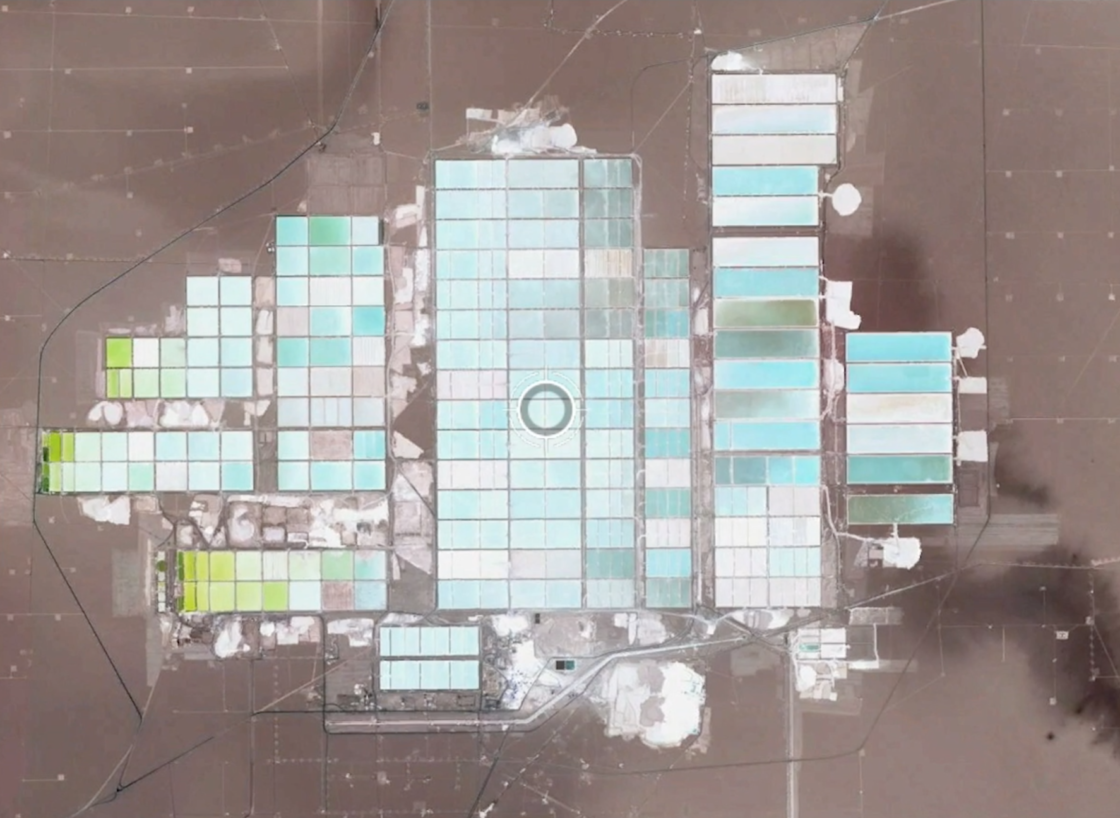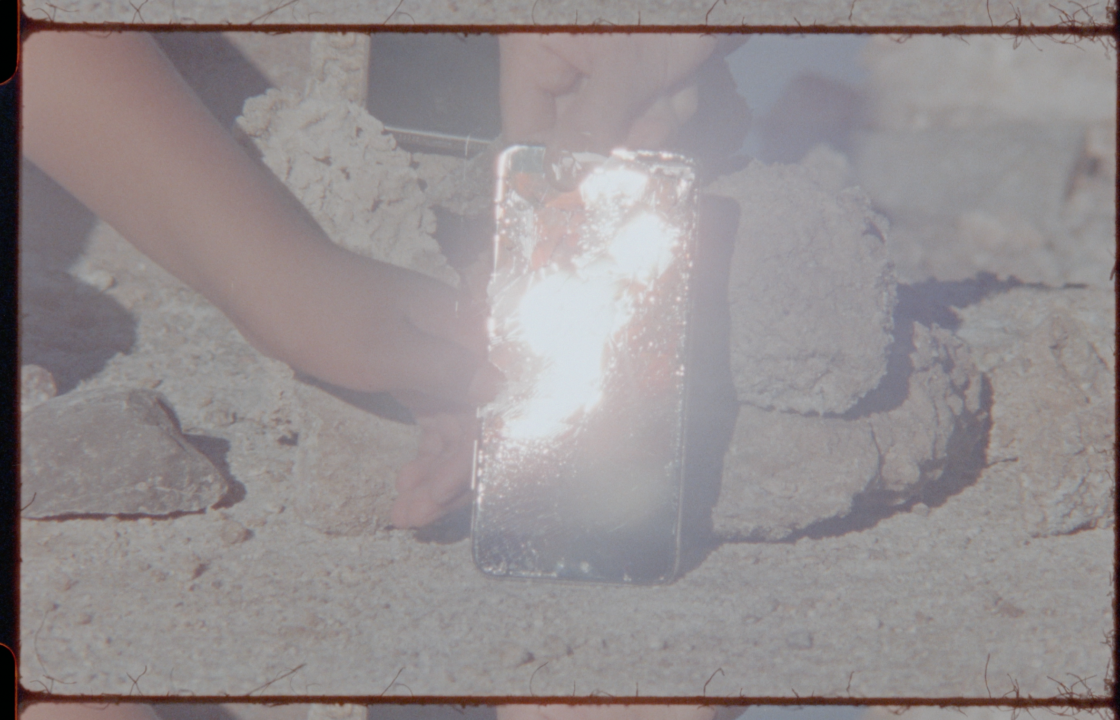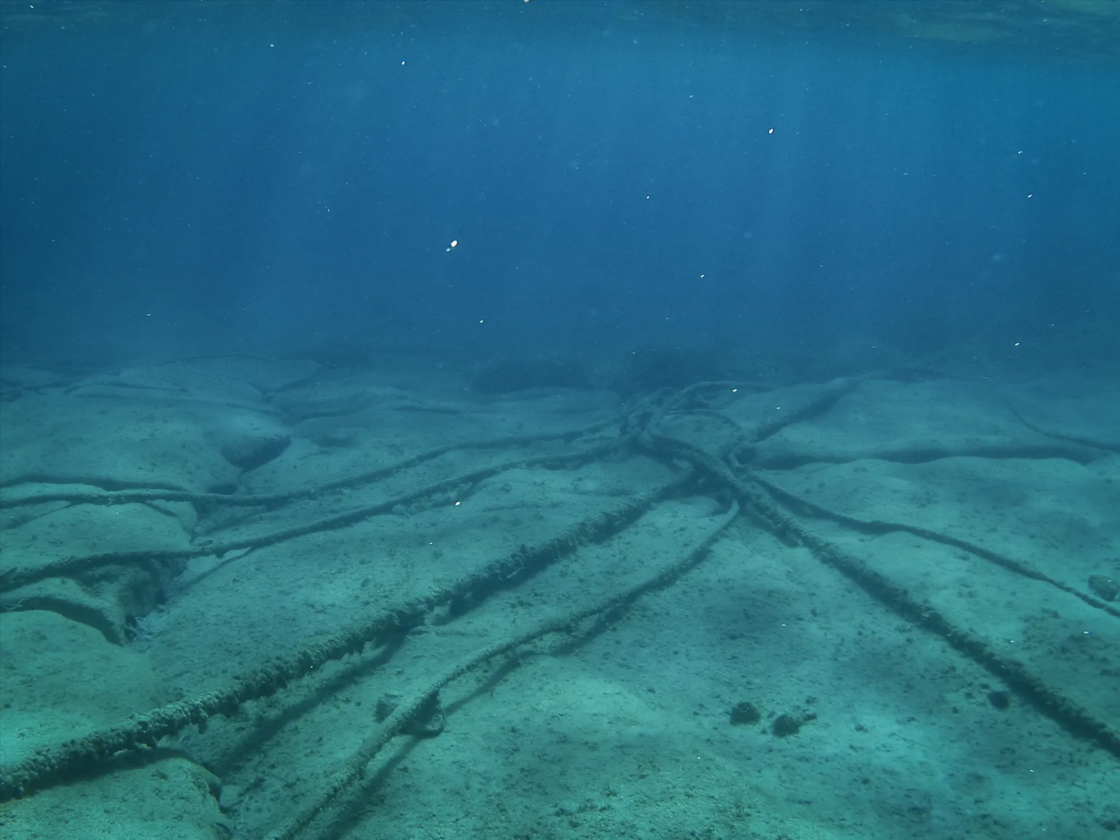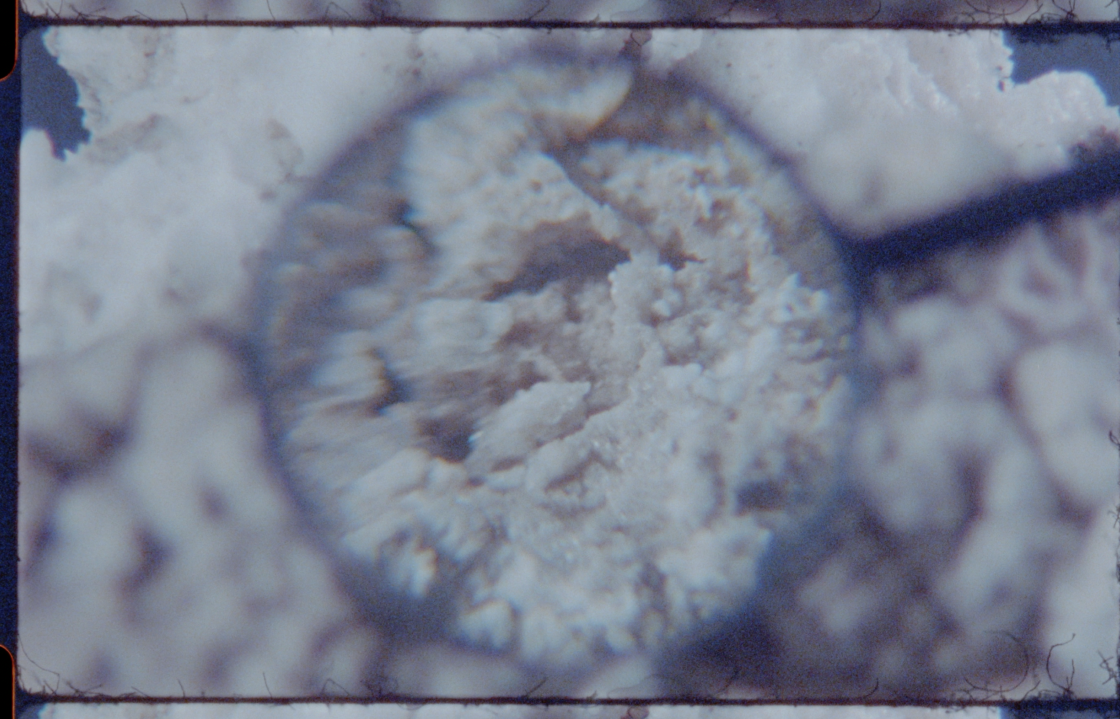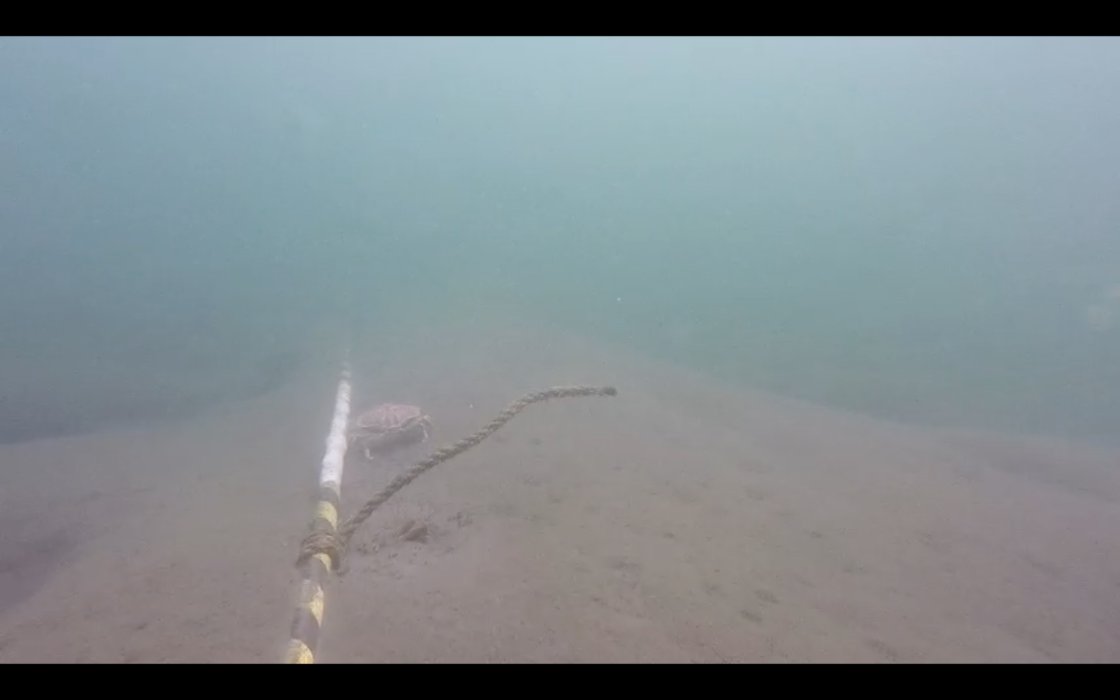The Fallen Clouds is a speculative research-based installation that delves into the socio-environmental resonances of digital infrastructures in Chile to break the great myth of cloud computing. The narrative follows a digital cloud searching for its body and origin that is extended from submarine cables in the Pacific ocean to data centers in Santiago and lithium extraction in the Atacama desert. On the journey, the cloud becomes entangled with various human and more-than-human beings, socio-environmental conflicts, as well as past, present and future myths. This journey takes the form of an atmospheric installation composed of floating sound sculptures and a digitized S16mm film projection to generate a deep listening and immersive experience opening a portal to a deep time temporality where future remediation lies in the past.
Selfies, memes, tweets; they all live in the “cloud”, an opaque metaphor of our times. Where are those “clouds”? What footprints do they leave on the ground? How can we make their materialities and geographies visible?
The project uses the “myth” of the cloud as a way to connect two contemporary issues – the growing expansion of digital infrastructures and the climate crisis – marked by forms of historical extractivism, such as the exploitation of minerals and water. The Fallen Clouds project locates the ethico-political tensions between technological development and the socio-climatic crisis in three critical digital zones and infrastructures in Chile: a submarine Internet cable extended around the coasts of the Pacific ocean, a new Google data center in Cerrillos, and the carbonate plants of lithium in the Atacama salt flat. In each territory, we relate with different beings affected by the presence of the infrastructures including crabs in the submarine bottom, an ecofeminist group in Santiago, and Lickan Antay women in the Atacama.
The Fallen Clouds film is composed of images of the different beings, sensory observations, and processes happening around the digital infrastructures. It is recorded in S16 mm to draw attention to its organic materiality. The film narrative starts with a submarine observation of a new fiber optic cable extended throughout the coasts of the Pacific Ocean in Chile. It then follows the actions of MOSACAT (Movimiento Socioambiental Comunitario por el Agua y el Territorio), an ecofeminist group protesting against the installation of a new Google data center in Cerrillos that would use 169 liters of water per second to cool down its servers. Finally, the film observes the extraction of lithium in the Atacama salt flat from the perspective of a geologist and three Lickan Antai women: a girl, a woman, and an elder. The film is presented as a 20-minute video loop of the digitized S16 mm.
The sound is recorded using different sound artifacts, from direct sound captures to contact and hydrophone mics. It experiments with viscous and electric sound compositions, in which the narration of different myths told by MOSACAT and the Lickan Antay women are embedded. From these materials, a cloud symphony is born. The symphony is played through floating sound sculptures that have been created with the materials that we gathered around the three explored infrastructures: salt flat crust, water pipes from the lithium extractive sites, dried seaweeds from around the fiber optic cable, or a piece of a fiber optic cable itself.
This visual, sonic, and material experience allows the viewers to get immersed in a trance journey that bewitches them to break the spell of the cloud. It invites them to have a different perspective on digital technologies and imagine other possible futures that embrace circular temporalities as well as interspecies and intercultural relationality based on mutual care.
The Fallen Clouds production process has involved several field sites and collaborators. In January 2022, we conducted fieldwork in Cerrillos, where we worked with MOSACAT and visited the territory where the new Google Data Center will be located. We also worked with MOSACAT on the scriptwriting process in order to understand their needs, demands, and desires connected to this creative process. Later in March, we followed five MOSACAT members and filmed their process of making different flyers that they glued at a bus stop during the night.
In February, we traveled to San Pedro de Atacama to attune to the territory and to generate collaborative bonds with local communities to whom we previously presented our project. We visited the Atacama salt flat, a place we had only seen on Google Earth images, and discovered the gigantic water tubes that feed the pools where lithium is extracted. We met with Karenn Vera Tito – a Lickan Antay woman and educational mediator, and Juan Carmelo – a traditional environmentalist educator and a fellow friend of Karenn from her same indigenous community. We made a ritual of asking permission from the land and the ancestors to start developing our project and visited the land of their ancient abuelos (great grandparents). Tradition, respect, and sincerity are fundamental for this community.
In April 2022 we engaged in an educational mediation in Río Grande. We worked in the local Lickan Antay school together with Ashley, the only ten-year-old student in the school, and her teacher Isabel Tito along with a traditional educator Juana Anza. Karenn Vera Tito was the educational mediator of the process and applied different ludic dynamics to create a myth connecting the idea of the “cloud”, its local socio-environmental resonances, and the Lickan Antay cosmovisions.
Our filming process continued in the Atacama desert, starting in San Pedro de Atacama town located 2.408 m above sea level. We worked with the Lickan Antay community of Río Grande in the Chaxa lake, which is characterized by a rich and unique ecosystem and considered a sacred place by the original inhabitants (the local Toconao community that is currently administering the place kindly allowed us to film there).
In May, we followed the installation of the new submarine fiber optic cable called “Prat”. This cable is owned by the local telecommunications company GTD which allowed us to observe the complex process behind the cable construction.
During the fieldwork and filming process, we collected different materials that make up the “cloud”: from algae to salt flat crust and water pipes used for lithium extraction. We then defined the different sound artifacts to create the vibrant composition – speakers of different sizes and transducers – that form the eventual Fallen Cloud installation to be unveiled at the CreaTures festival in Seville, June 2022.
